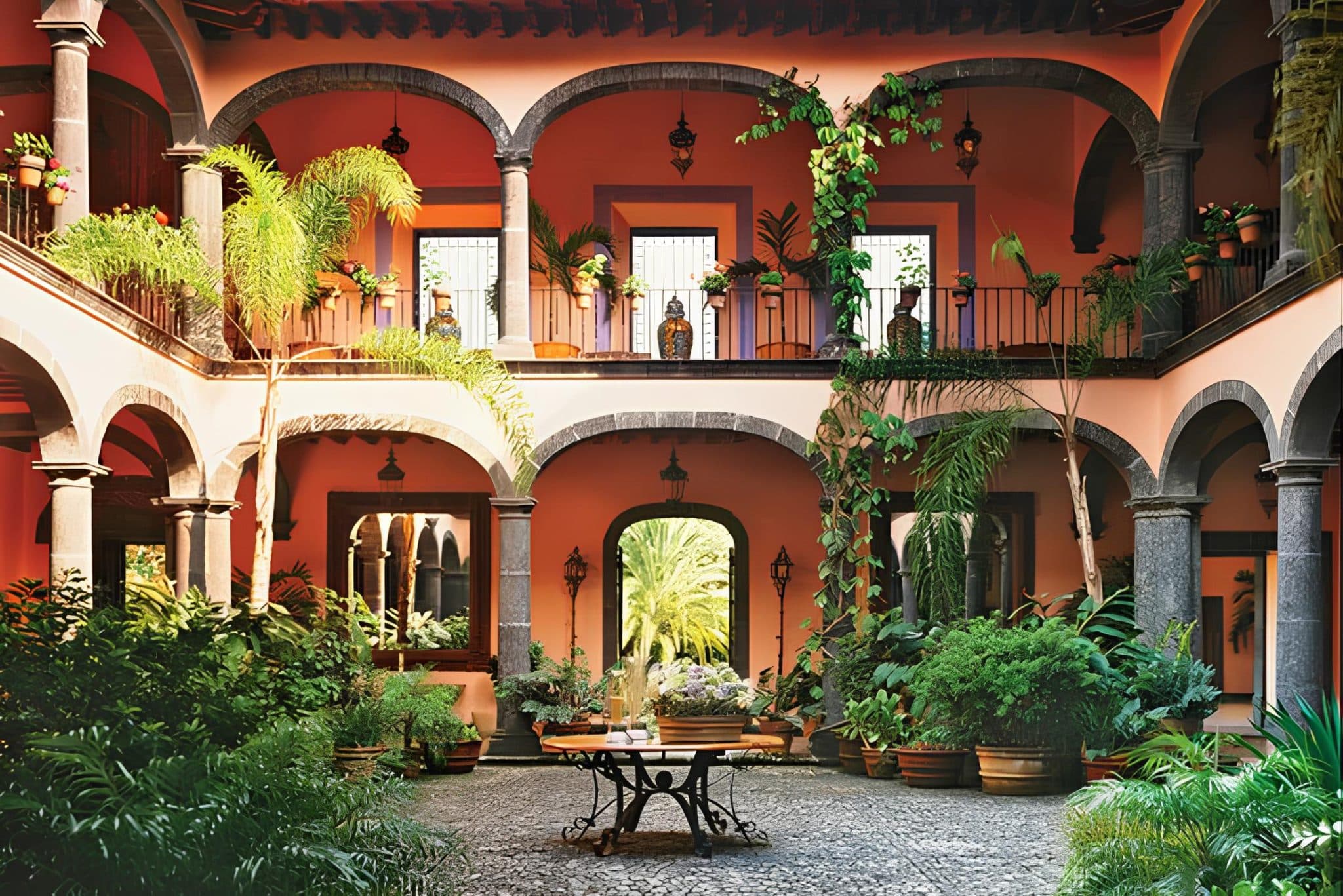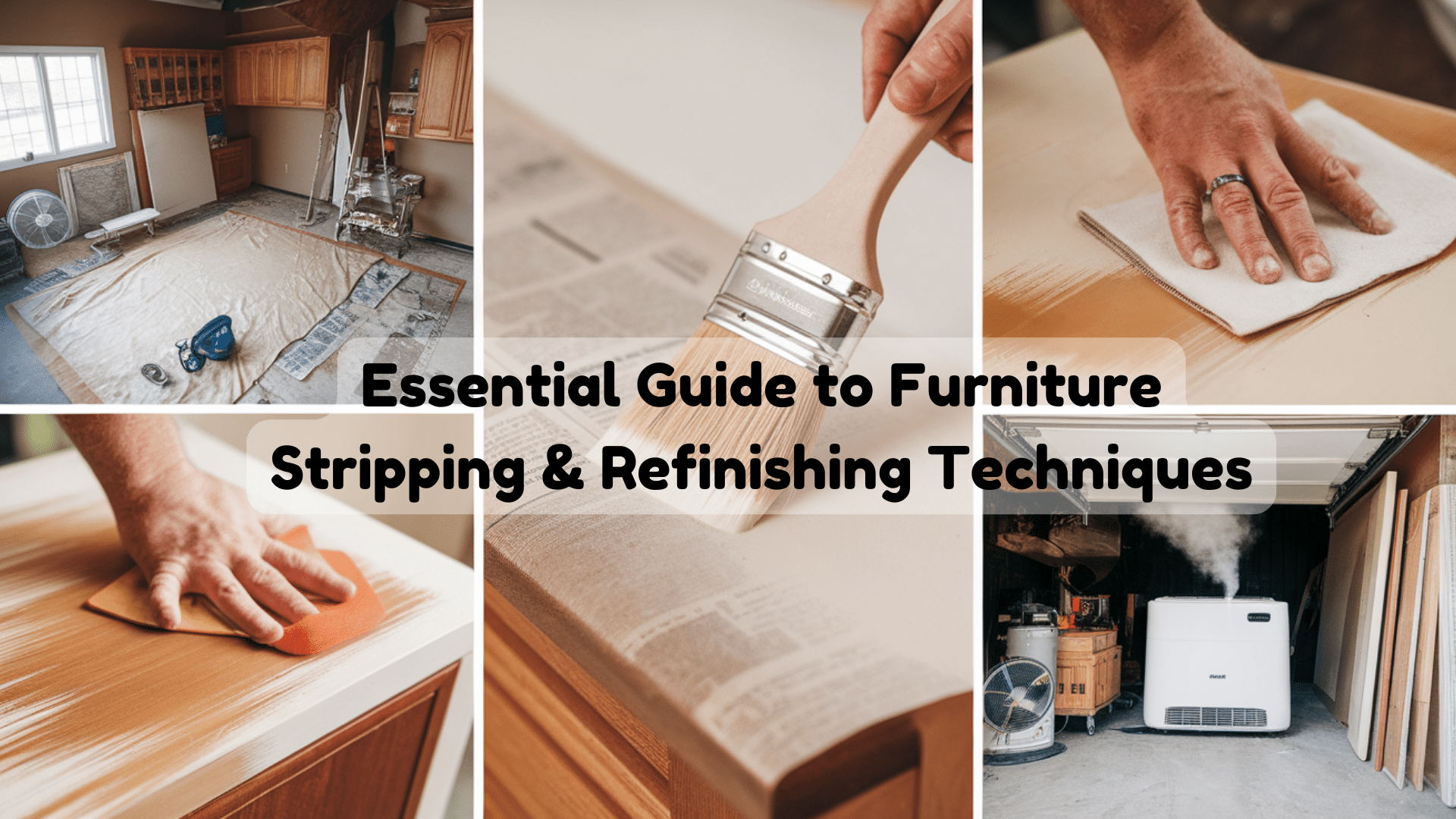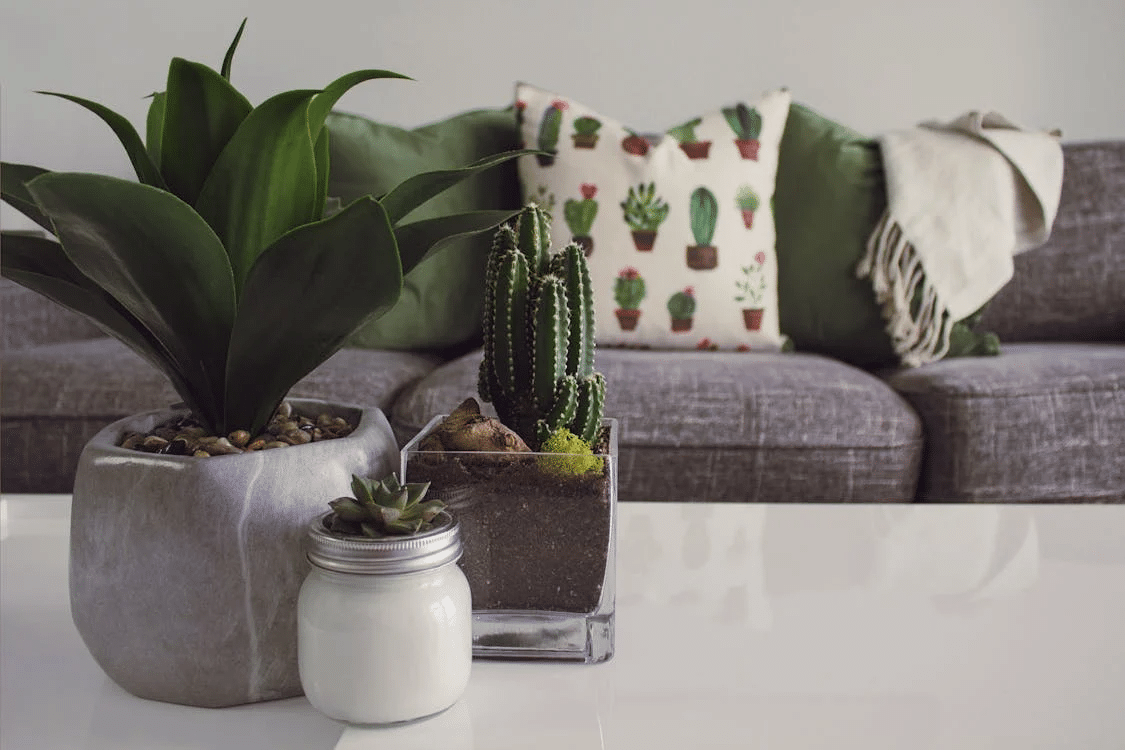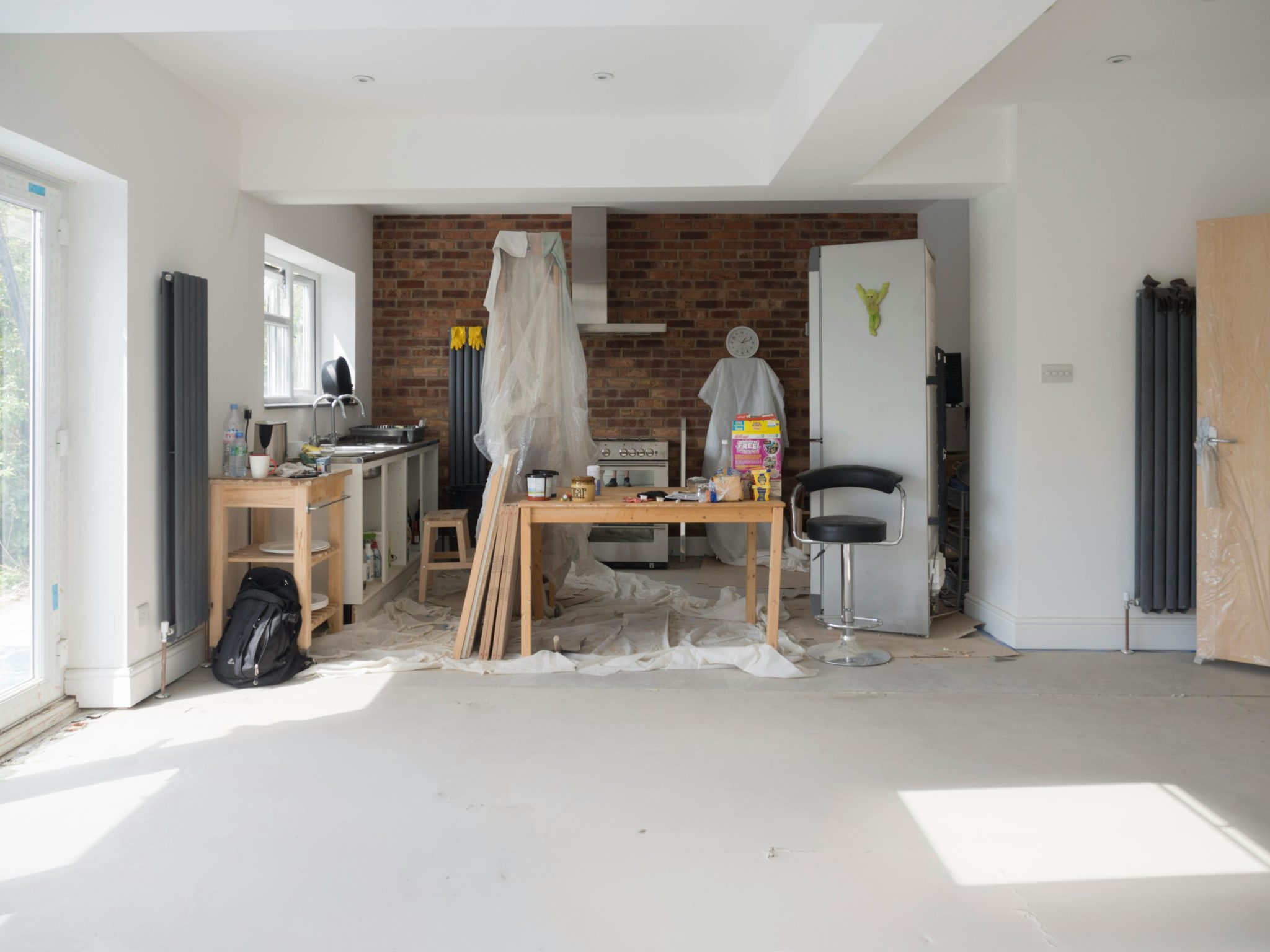Why is Hacienda Style so Popular?
The Hacienda style is an architectural beauty whose story of elegance dates back centuries.
Over time, this style expanded in nearby regions and later took over the world.
Originating from Spanish colonies, this style includes Mexico’s rich culture and the Western United States traditions to take up its shape in the later part.
This style of architecture is a perfect blend of charm and simplicity and perfectly incorporates the importance of indoor and outdoor living.
This eventually enhances the space’s aesthetics and functionality.
In this article, we will explore the allure of Hacienda architecture, its history, and various features to know what makes it a class apart.
So, without any further ado, let’s get started!
Brief History of Hacienda Design
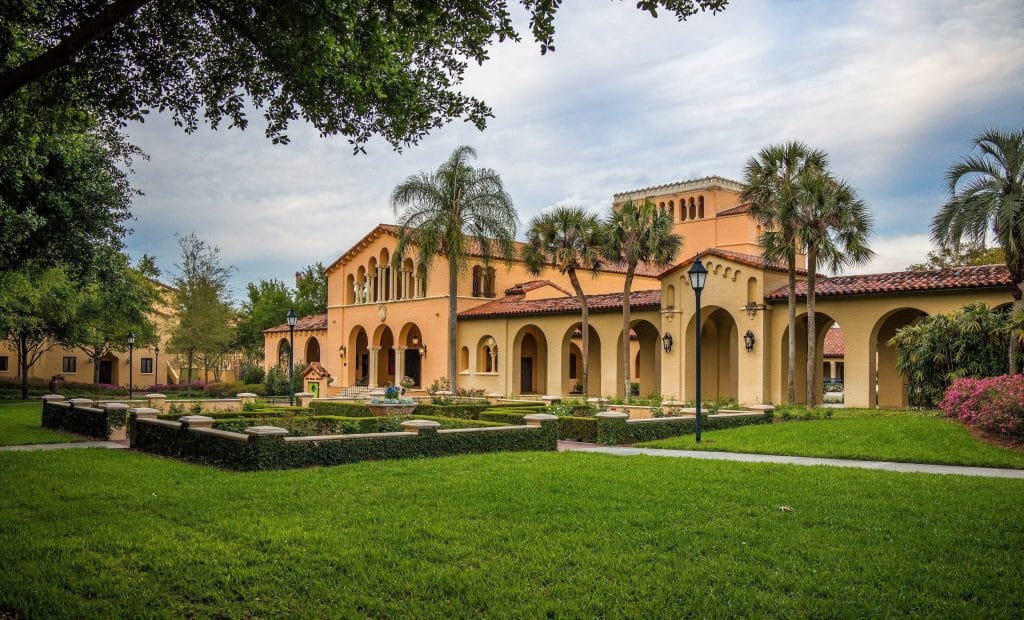
As mentioned in the introduction, the roots of Hacienda designs go to the remote parts of Spain and, later, certain parts of Mexico.
This style originated in the architectural movement owing to its traditional building techniques. The life of hacienda style is near about 400 years old now.
Dating back to history, the Hacienda homes were mostly built in southern states like California, Texas, New Mexico, Florida, and Arizona.
People from Spain came to these regions to settle and favored this style because of the warm, dry climate.
The climate was similar to that of their home nations. Therefore, the typical hacienda architecture provided the ideal methods for building homes.
Red clay for roof tiles and adobe, a construction material inspired by straw and clay, is common in building hacienda-style homes.
Despite its brief existence, which ended in the mid-1800s, the Spanish Colonial era significantly influenced the styles of homes built in the eras.
The style’s ongoing popularity in the 20th century led to the emergence of numerous regional peculiarities during its growth.
We then look at a few essential hacienda-style features you can add to your house.
The Popularity of Hacienda Style and its Application
While working down on the detailed basis of the interior design, it is essential to keep in mind the most prominent elements that the hacienda homes had.
In the following segment, we will be detailing the key features of it.
1. Red Clay Roof Tiles

One of the most distinctive features of haciendas is their low-pitched roof covered in red clay tiles.
Handcrafted roof tiles are an essential requirement to project the authentic hacienda style.
In addition to its cozy, pleasing appearance, its half-tube design serves a functional purpose.
In actuality, this form helps to retain cool air, which reduces heat in your living area.
However, remember that clay roofs are also vulnerable to leakage in regions with high rainfall.
Because of this, you should only think about putting this kind of roof in areas where the weather is primarily warm and dry or take sufficient care of rainfall.
2. White Stucco Walls
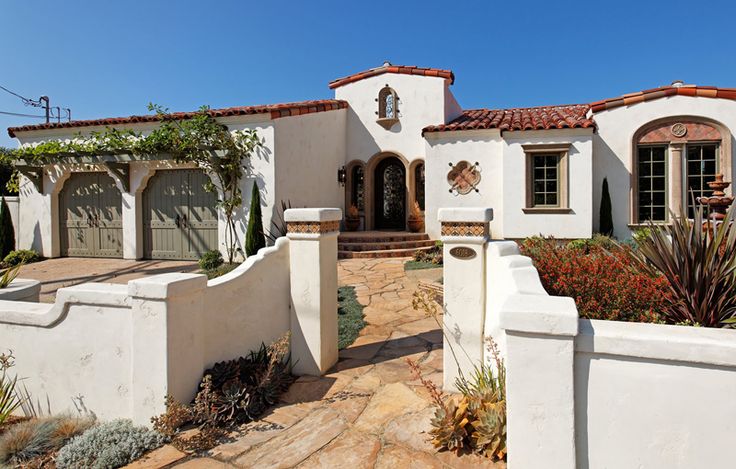
The well-acclaimed white stucco walls are the second characteristic that defines hacienda architecture.
Because adobe was easily found in the surrounding area, it was used to build traditional haciendas.
The stucco’s white color and the construction of the walls provide excellent year-round sun protection.
Moreover, the walls keep heat from entering the house throughout the day.
Nevertheless, they also give out heat at night as they gradually release the heat they have absorbed.
3. Rustic Wood Accents

The trademark element of hacienda-inspired interior design is its rustic wood structures.
The raw timber beams and heavy wooden doors highlight the natural element of the design.
Wood should be the foundation for more than only the home’s construction.
It gives warmth and character to a deep white plaster wall; thus, it is advised that it should be included in the furniture.
That said, if you intend to remodel your new Texas residence before moving in, ensure that the furnishings and the building materials have the spirit of hacienda architecture.
Of course, you can work with a firm to ensure your decor and furnishings get to your new house securely.
4. Small Windows

The prominent feature of hacienda homes is the small windows with spindles.
This is because the relatively small size of the windows reduces the amount of direct sunlight that enters the living space.
However, during the architecture, it is ensured that the wind creates a draft in the home.
Historical hacienda homes did not have glass panels.
But nowadays, glass panes have become common in homes built by drawing inspiration from ancient architectural styles.
5. Courtyards
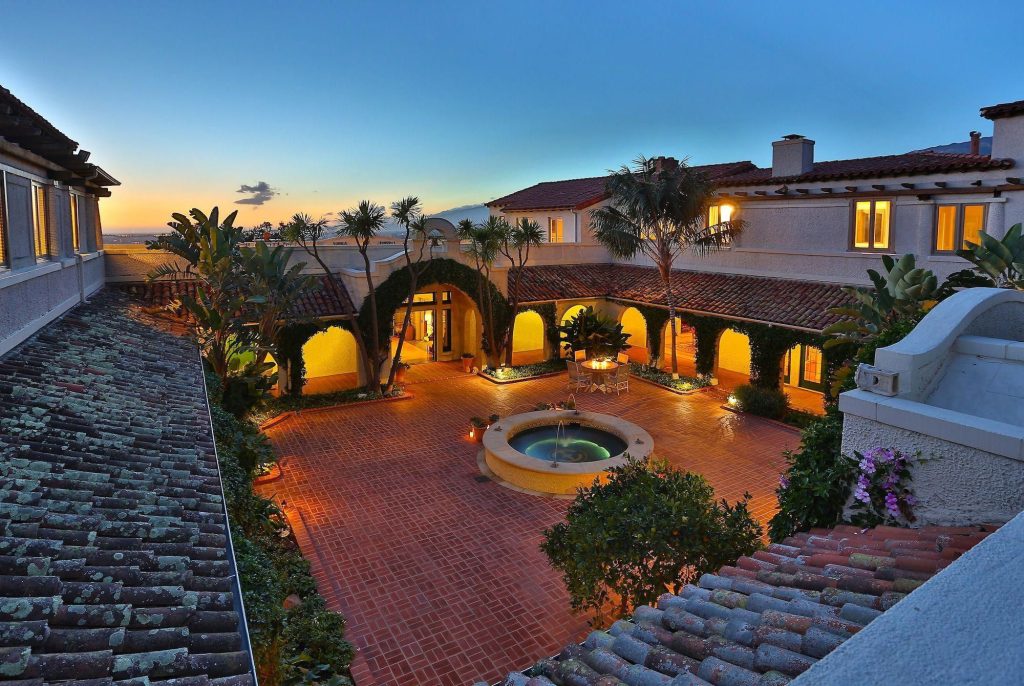
In modern hacienda homes, the courtyard could be either inside or outside.
However, interior courtyards were typically found in the middle of ancient hacienda homes.
In addition to providing privacy, the courtyard was made simpler for heat and odors to escape during cooking.
Most homes designed by drawing inspiration from haciendas nowadays have a backyard behind or to the side of the house.
6. Archways
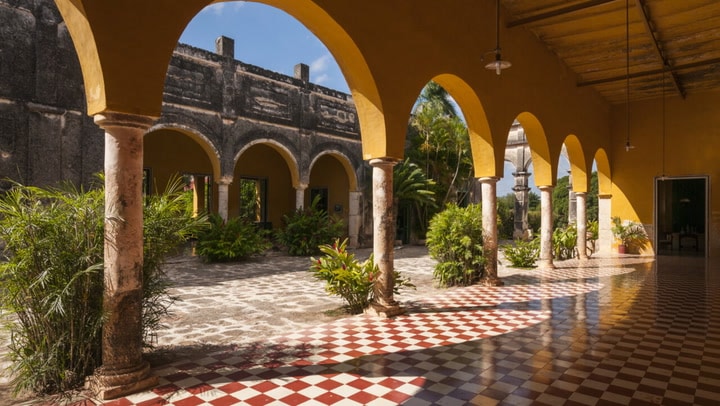
Homes built by drawing inspiration from hacienda architecture are simple, have clean exterior architecture, and flaunt various decorative elements.
Therefore, one of the most recognizable features of the hacienda is its archways for outdoors, such as hallways and courtyards.
This feature adds a luxurious theme that complements the entire architecture with elegance.
So, most homes incorporating the hacienda design can never be imagined without archways as a basic structural element.
Conclusion
The Hacienda architecture’s timeless appeal and versatility showcased the rich Spanish tradition and culture when it was grounded.
It is not just architecture. Rather, it is a lifestyle that has given generations to adore the beauty of it.
As we have explored the features, we are fairly convinced about the importance of the Hacienda architecture.
The modern form of architecture has drawn a lot from it.
Whether about the elegant courtyards, textures, or vibrant color palettes, Hacienda offers us great importance.
People celebrate it as a heritage and take pride in their ancestors’ contributions in the areas close to where it originated.
We hope this guide will be deeply relevant to provide you with an understanding of Hacienda architecture and its relevance today.
Share your views on how you visualize the ancient art form with context to modern architecture in the comments below!

